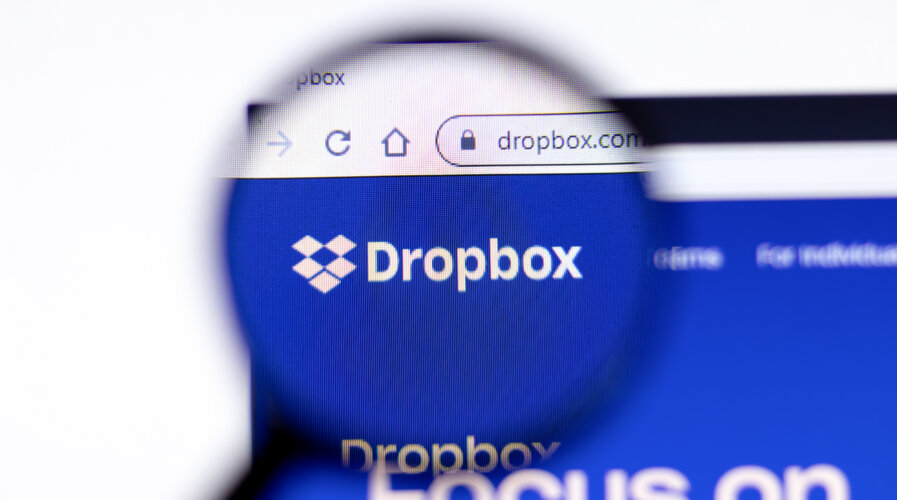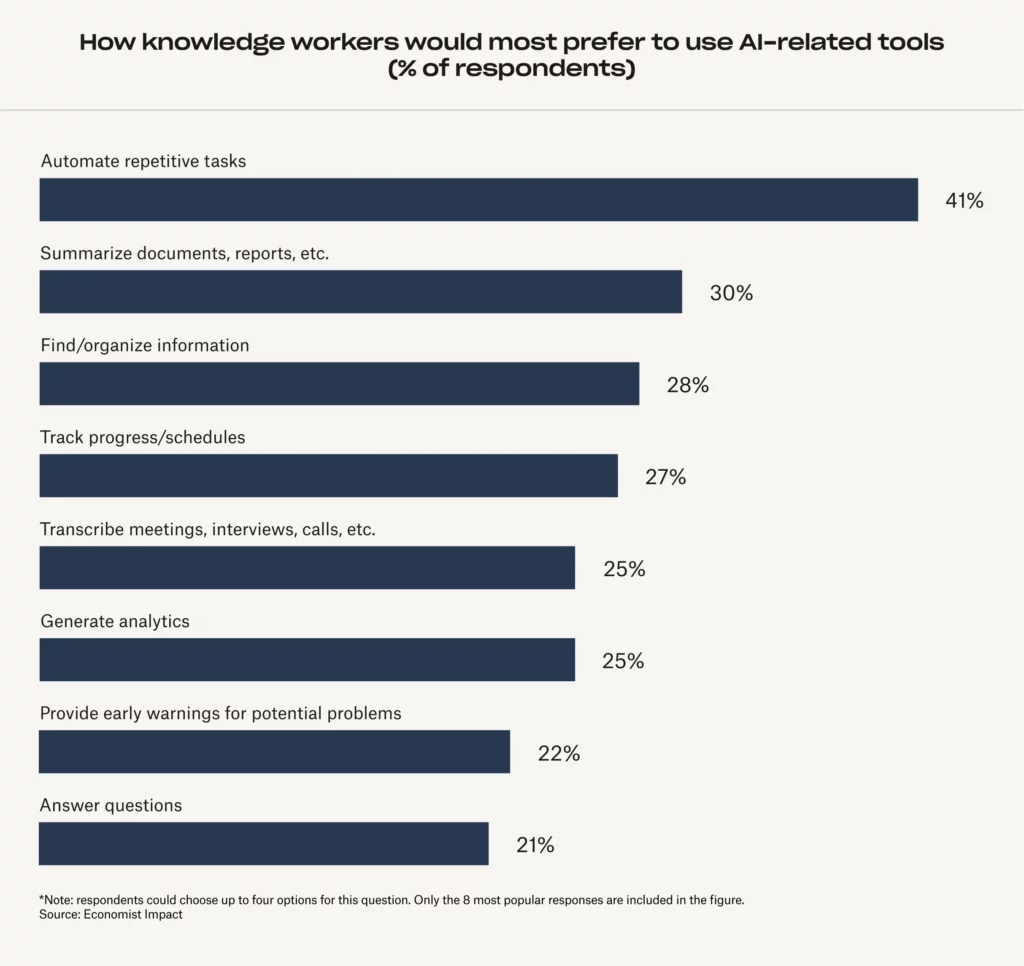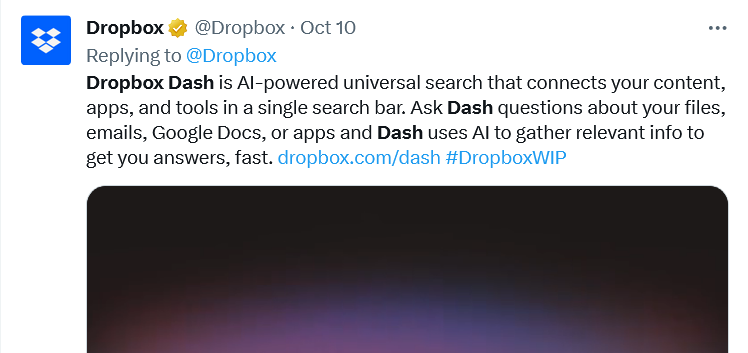
Dropbox shares insights on how AI can restore your focus at work. (Source – Shutterstock)
How AI can restore your focus at work
- AI revolutionizes work by fighting distractions and boosting productivity.
- Beyond improving efficiency, AI transforms meetings and tasks, fostering creative and strategic work.
- AI in productivity tools could save hundreds of hours of distraction.
In today’s digital work environment, seeking focus amid incessant online noise is akin to an intense treasure hunt. Employees wade through a ceaseless flood of messages, meetings and alerts, all vying for a slice of their divided attention. This ongoing struggle often devolves into a perpetual hunt through digital folders, emails, and an abyss of browser tabs, in search of the very elements crucial for efficient job performance.
Such relentless digital disturbances do more than just consume our time; they plunder the potential within us. The cumulative effect of these distractions represents hundreds of hours lost each year, time that could have been dedicated to more impactful and rewarding endeavors.
Yet the future of productivity isn’t predetermined. Fresh research points to a hopeful trajectory, highlighting the role of AI-powered tools, flexible work setups, and asynchronous communication strategies in paving a more focused, efficient path forward.
Empowering work productivity through AI
A recent study by Economist Impact, sponsored by Dropbox, reveals a telling snapshot: 42% of respondents confessed to rarely enjoying an uninterrupted, productive work hour. The study further estimates a staggering loss of over five hundred hours per year for the average knowledge worker due to distractions, with 157 of those hours squandered on unproductive messaging via workplace chat applications—identified as the primary culprit for broken concentration.
Simultaneously, the rise of generative AI is ushering in innovative product development possibilities tailored to modern work’s nuances. The study also indicates a positive reception to automation tools, increasingly driven by AI, with 79% of users reporting enhanced productivity and roughly 70% acknowledging better organization.
The research additionally provides insights into future expectations from AI technology. The overarching idea is clear: the more our tools can streamline daily tasks, the more we can dedicate ourselves to innovative, collaborative, and creative pursuits.
Automation of repetitive tasks emerged as a top priority for over 40% of participants. Close to 30% expressed a desire for tools capable of aiding in information retrieval, organization, and summarization, while over 20% sought solutions for query resolution.

The preferable ways to use AI-powered tools. (Source – Dropbox)
AI’s potential to transform meetings is particularly striking. Internal insights from Dropbox—sourced from comprehensive interviews and surveys with employees, (orchestrated by its People Analytics team alongside external researchers)—reveal that meetings carry hidden costs not reflected in our calendars. These include the time spent in preparation and post-meeting processing and the cognitive toll of switching between unrelated meetings.
The prospect of AI tools shouldering some of this cognitive burden—from transcribing and summarizing discussions to compiling preparatory materials—promises a future with more room for focus and reduced administrative clutter.
The sentiment gleaned from the Economist Impact survey suggests a prevailing optimism: AI and automation are viewed not as threats to job security, but as enhancers of work quality, intelligence, and efficiency. Among respondents already relying on AI and automation tools, 86% felt their job security was either bolstered or unaffected by these technologies—a consistency observed across all age groups, from Gen Z to Baby Boomers.
AI’s battle against work distractions
Mitigating the cognitive strain caused by administrative excess is crucial for unlocking our full productivity potential. Yet, in an era punctuated by endless meetings and incessant messaging, maintaining focus is an uphill battle.
Although indispensable in remote work setups, key communication tools also double as sources of distraction and tension. Approximately 60% of people report feeling compelled to respond instantly to messages, while 63% admit to a constant pressure to remain accessible.
Economist Impact’s findings underscore the productivity pitfall: inefficient meetings and workplace chat applications account for the loss of 79 and 157 hours annually per knowledge worker, respectively.
Addressing the issue of unproductive messaging alone could unlock substantial economic benefits: potentially US$31,000 per knowledge worker in the US (US$360 billion on a national scale, representing 11% of annual economic production).
Recovering from such disruptions, including emails and meetings, devours 127 hours each year for the average American worker—a number that’s on the rise. This trend isn’t confined to the US; it’s a global phenomenon, with workers in countries like Korea, Australia, and the UK losing over 100 hours annually to distraction recovery.

Hours of lost focus per knowledge worker (left axis) and equivalent economic cost per person (right axis). (Source – Dropbox)
While eradicating every distraction remains an unattainable ideal, the potential to harness innovative tools to contain this turmoil is a realistic ambition.
This strategy encompasses utilizing solutions such as Dropbox Dash for prompt information retrieval or automated transcriptions for more efficient meetings. AI technologies stand at the forefront of these pragmatic enhancements of our professional lives.
What is Dropbox doing to enhance work?
Now available in open beta, Dropbox Dash is a testament to enhanced search functionality, thanks to its AI infusion. It amalgamates various apps, tools, and content under one search umbrella, significantly easing the information hunt. With features like Stacks, an intelligent system for link organization, and a centralized start page, it streamlines navigation throughout the working day.

Can AI free us from meetings that should have been emails, and emails that could have waited till meetings?
Addressing the contemporary challenge of managing content sprawled across various platforms, Dash represents Dropbox’s solution to digital clutter, allowing users to concentrate on more substantial tasks. Based on user feedback, the system has evolved to accommodate keyword and semantic searches, eliminating dependence on the exact memory of extensive titles.
Additionally, Dash can respond directly to queries by using AI to parse and synthesize information from diverse sources, delivering rapid, pertinent responses. This development signifies a crucial stride toward adept digital workspace administration.
Since its launch, Dropbox AI has been pivotal in simplifying the summarization of high-volume content such as videos, audio files, and documents. The platform has evolved, enabling users to pose questions and receive summaries from content spanning their entire Dropbox account. By initiating a search, Dropbox AI swiftly finds relevant answers and file summaries, enhancing the speed of information retrieval.
What’s more, Dropbox AI is adept at interpreting natural language commands, and responding accurately to requests like “show me photos from my photoshoot yesterday.” Additionally, users are given greater autonomy over their digital experiences, with the ability to adjust AI functionalities within their account settings.
The digital workspace is undergoing a transformative phase. With the integration of advanced AI capabilities in tools like Dropbox Dash and Dropbox AI, our approach to handling information and managing tasks is becoming more streamlined and efficient.
READ MORE
- Safer Automation: How Sophic and Firmus Succeeded in Malaysia with MDEC’s Support
- Privilege granted, not gained: Intelligent authorization for enhanced infrastructure productivity
- Low-Code produces the Proof-of-Possibilities
- New Wearables Enable Staff to Work Faster and Safer
- Experts weigh in on Oracle’s departure from adland






